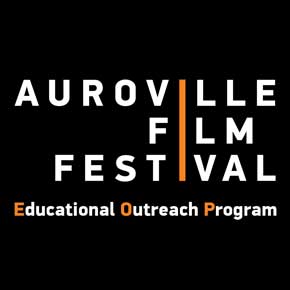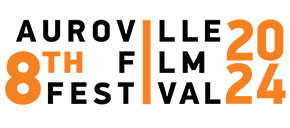 Auroville Film Festival
Auroville Film Festival
Educational Outreach Program
Introduction
The Auroville Film Festival’s educational outreach program explored the nature of the relationship between the material and spiritual goals of Auroville and the children brought up in and around Auroville. More specifically we investigated the following questions: Can we enable the children to express their deep aspirations and reflect their spiritual environment using the creative medium of filmmaking? How do children brought up in Auroville envision the world and how do they interact with the world? How can images reflect the development of children in Auroville? How do children brought up in Auroville reflect on the themes of Environmental Problems and Causes, Equality and Justice, Strength and Diversity, Money, Food, and so on?
Description of project
Throughout the year we taught filmmaking in Auroville schools through short workshops, weekly classes and yearly courses. Three teachers taught the genres of fiction, documentary, stop-motion and experimental film to 120 students. Students of Last School, Future School, Transition School, Udhayam After School, and The Learning Community (TLC) participated. 20 films were made by the students in total, involving over 600 teaching hours.
Highlights of the program this year included:
- 20 students from Transition School Skyped with filmmaking students in Uppsala, Sweden, to discuss themes and compare notes on their individual stop-motion animation films under our partnership with OnePeopleProductions.
- As part of our ongoing educational program, we co-hosted the CMS Vatavaran Film Festival here in Auroville and held special screenings for children, moderated by Kundavi. Attendees included 110 students form Aikiyam School, 59 students from Udavi School, 28 students from TLC, 50 students from NESS, 30 students from Last School, and 12 students from Deepanam School.
- As part of our ongoing educational program, we invited a film festival on Visual Art (presented by Lalit Kala Akademi, Chennai) and held special morning screenings that were open for schools to send students.
We found that small and focused classes with 2 students, readily available equipment, and a two-year commitment from the students enabled them to reflect on their aspirations and to express these through video. Students who attended regular weekly classes for at least one year could make films that reflected on community life, and make fiction films that re-envisioned their world. And even quite young children, through regular classes over the course of one term, could express their creativity and have an enjoyable experience working together through the making of stop-motion animation films.
Outcomes
The films made in our workshops and classes will be screened at the upcoming Auroville Film Festival (Oct 2-7, 2015). These films will be watched by all the school students as well as the community of Auroville at large. In the past they have engendered discussion amongst the students. The films deeply enhance the creative flow and the confidence of the children.
The program contributed to the growth of artistic expression in Auroville, and inspired students to become interested in documenting activities in Auroville. It also encouraged the students to explore and research the theme of human unity through filmmaking.
Reflections
Good structuring of themes and contents by teachers can help children to reflect on themes concerning environment, equality, justice, and so on. To create scripts on these themes presents a challenge which we have found that children of all ages can meet successfully.
Future direction
We will continue our push to have filmmaking incorporated in the syllabus of all the schools in Auroville.
Conclusion
It is very important that filmmaking continues being taught in schools in Auroville. This program enables schools to access teachers, syllabi, and equipment at no cost. With persistence, the program should be availed of by all students/schools, and all children of Auroville should have the opportunity to learn the language of images and visual storytelling.


